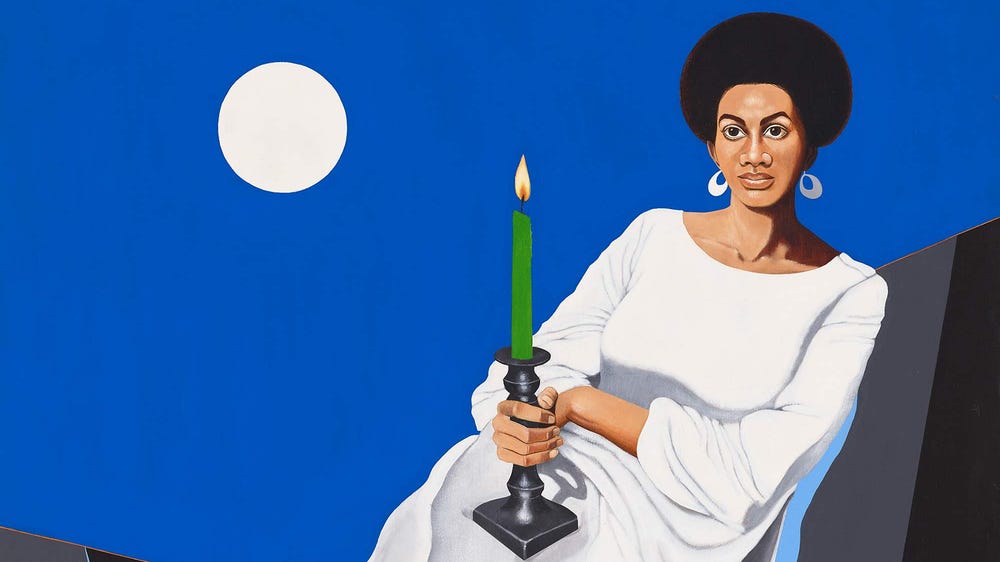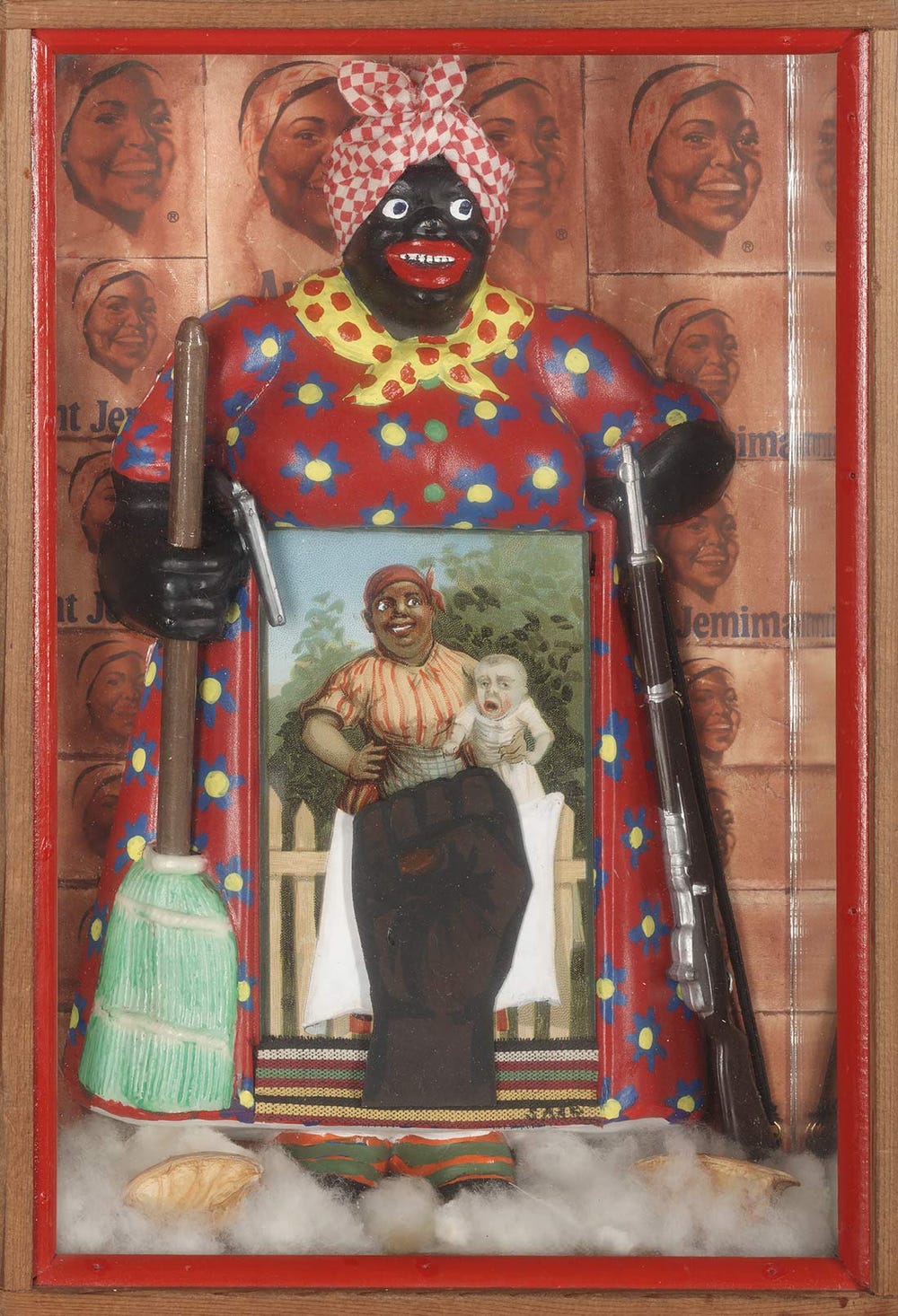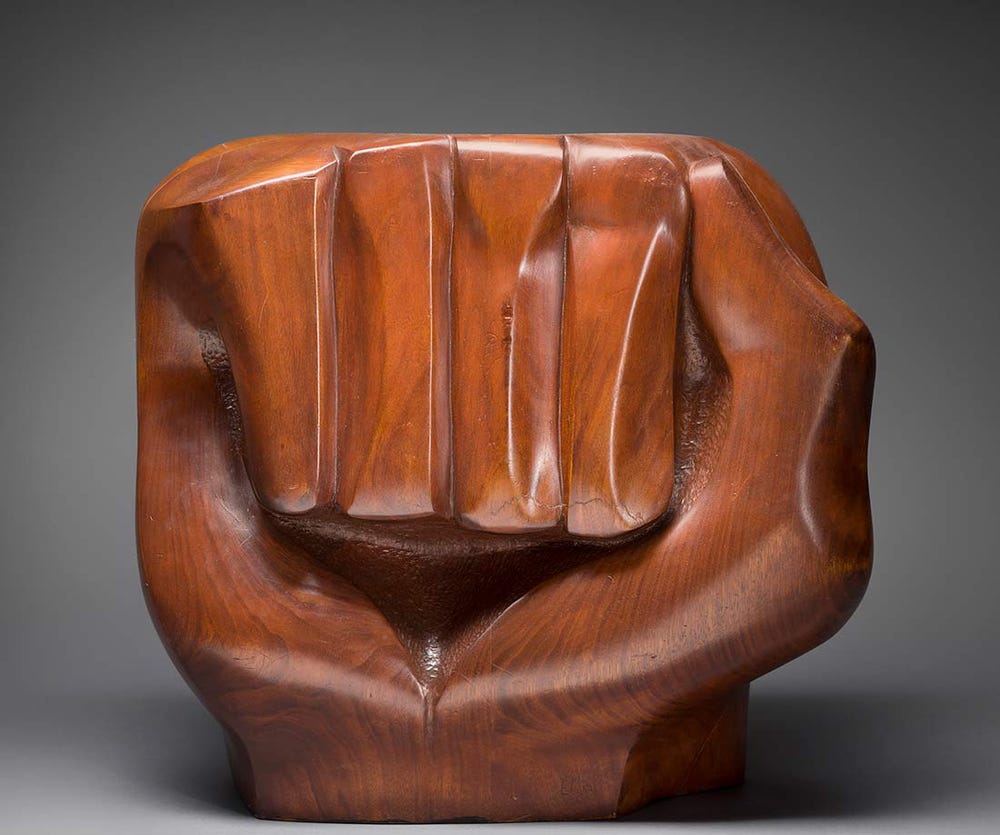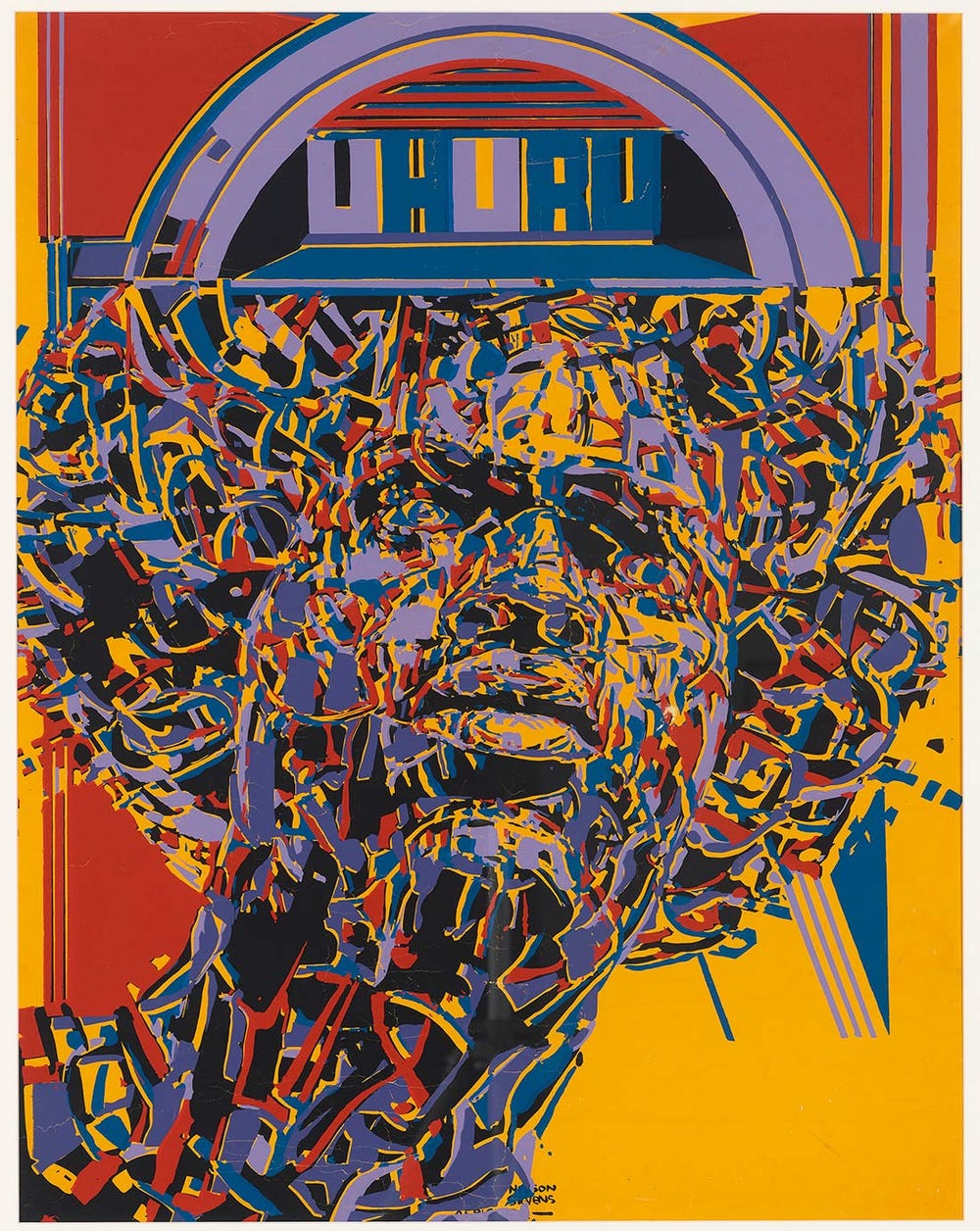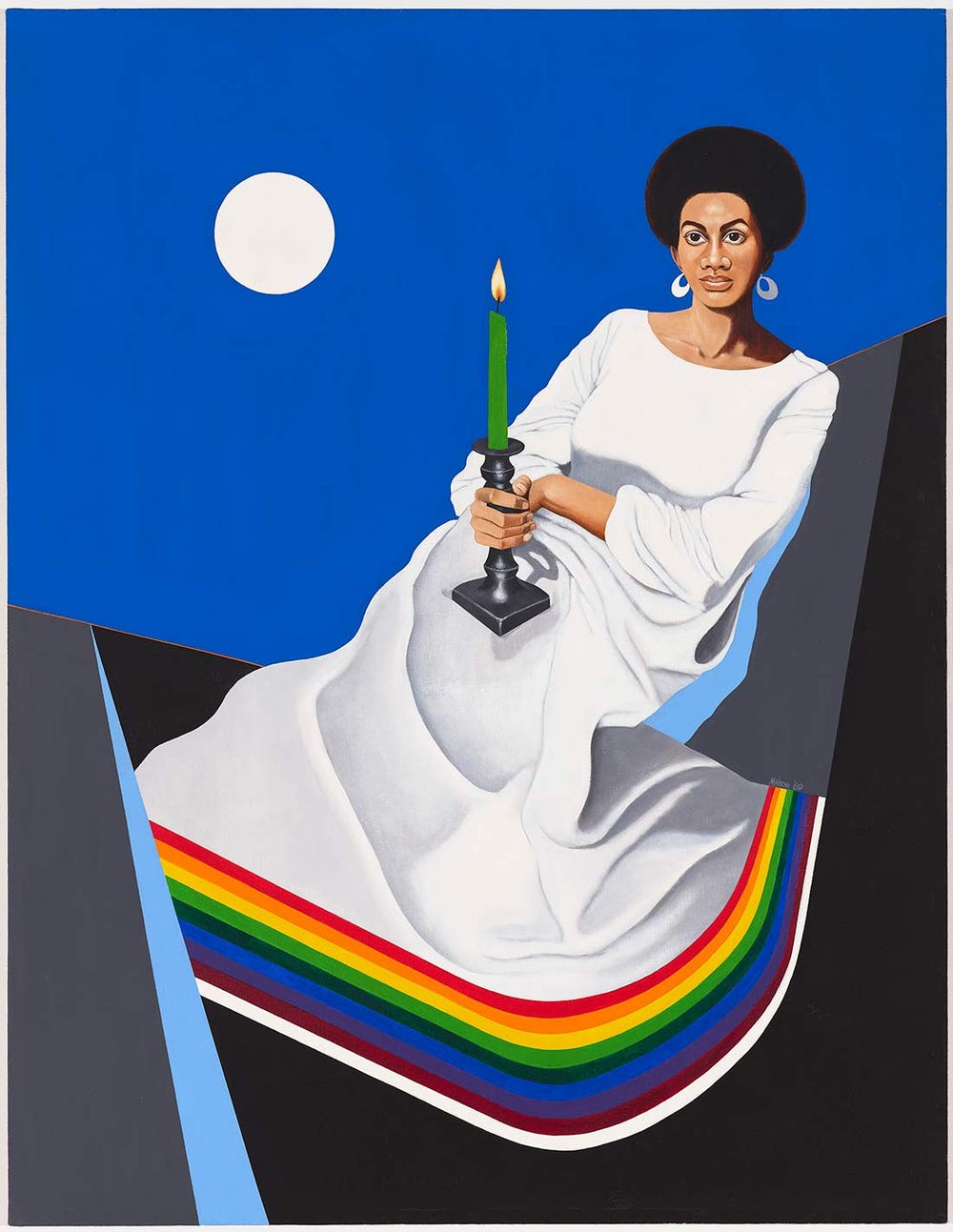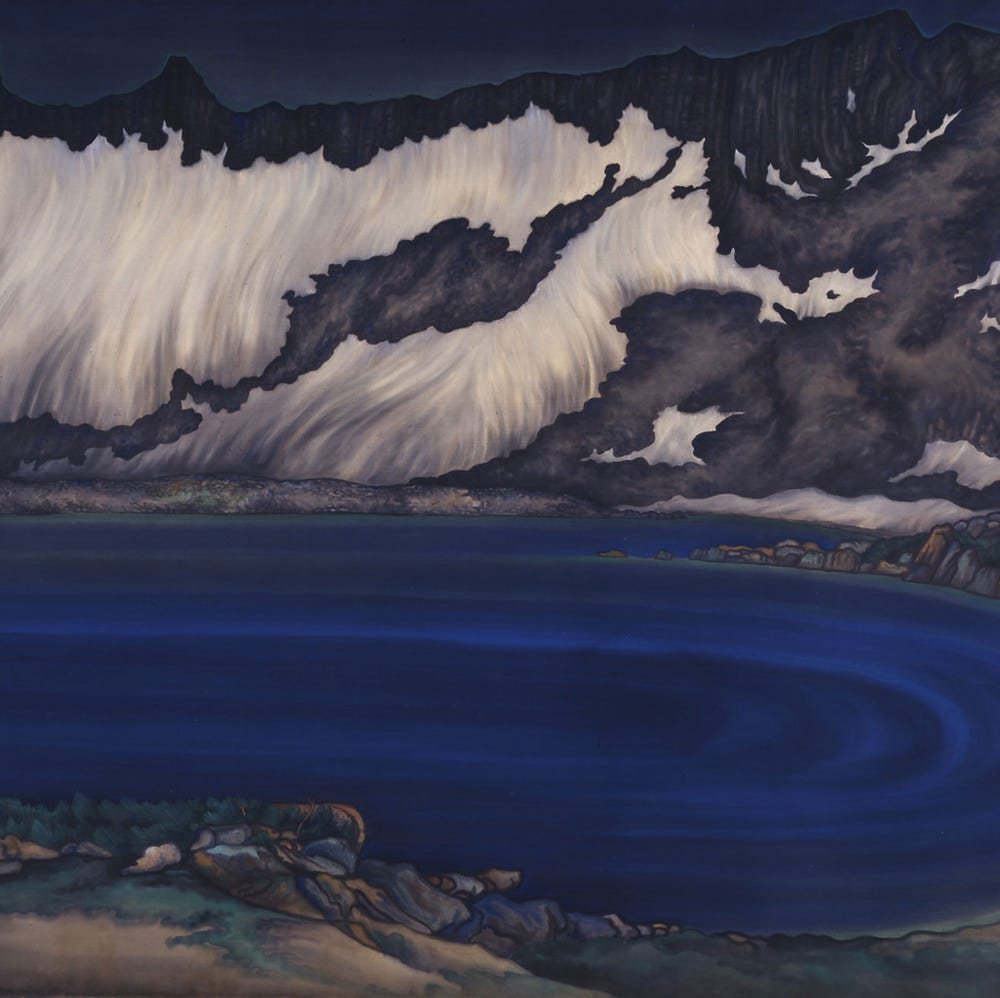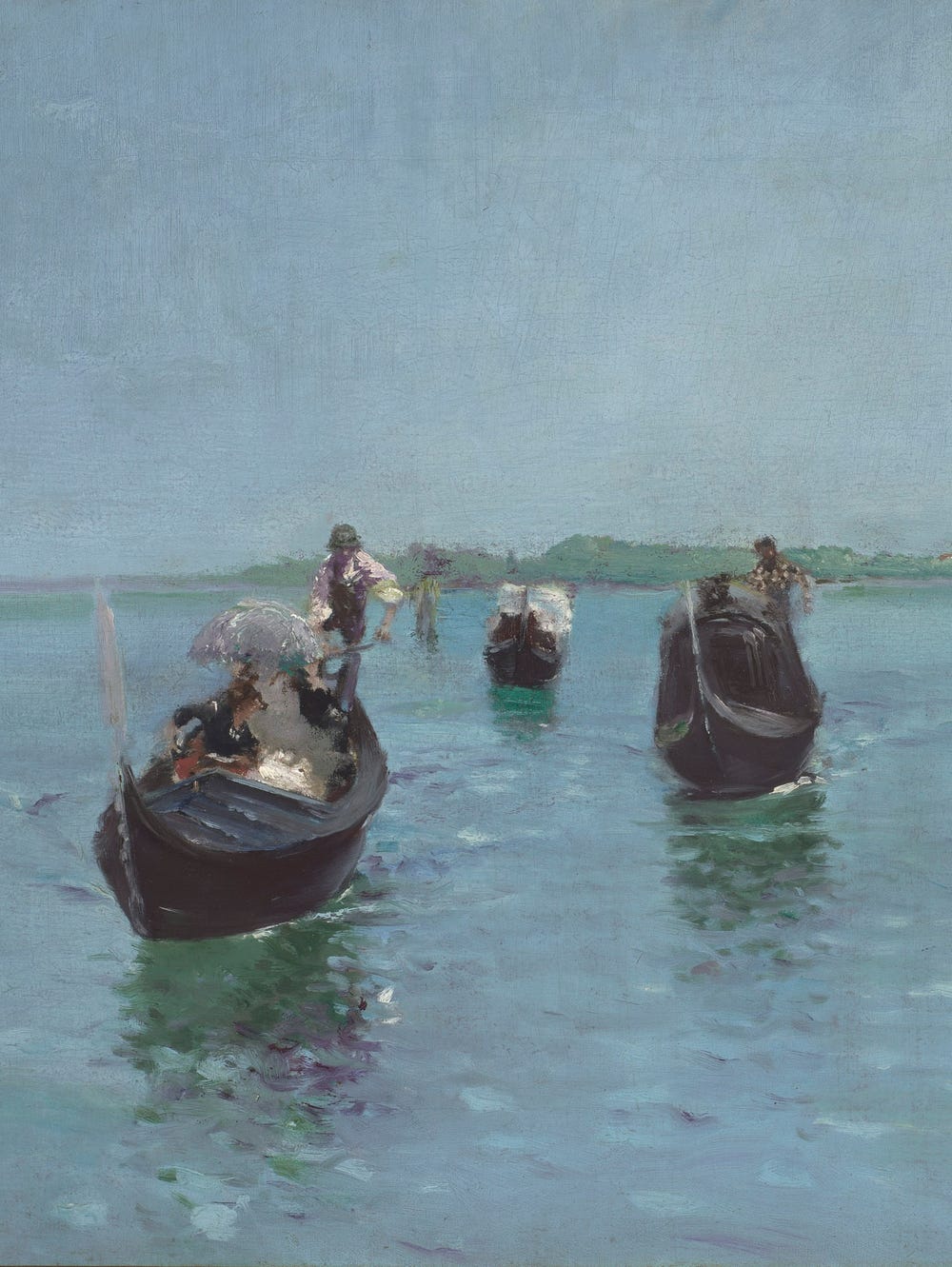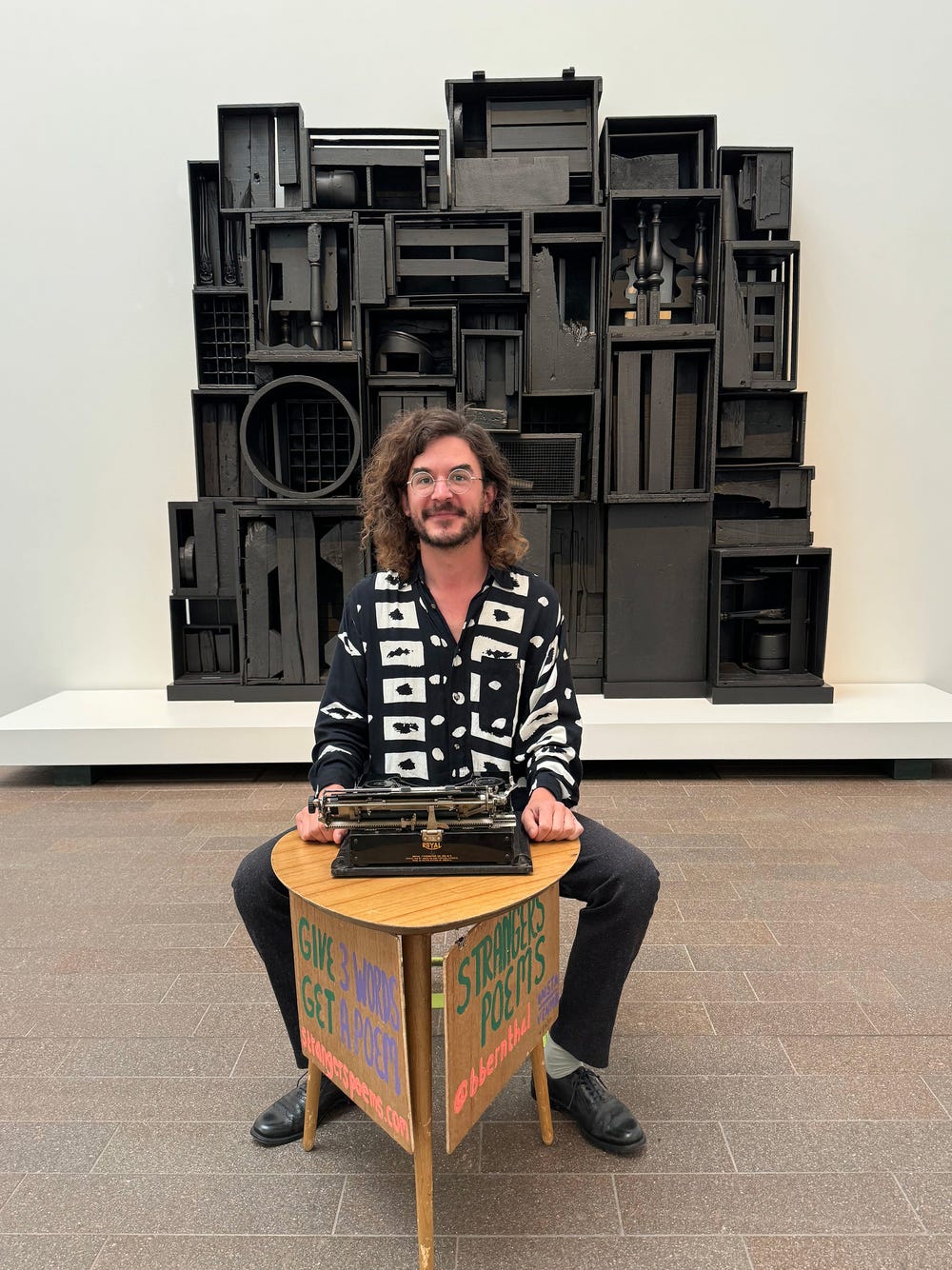Soul of a Nation: Art in the Age of Black Power 1963–1983 celebrates art made by Black artists during two pivotal decades when issues of race and identity dominated and defined both public and private discourse. The de Young’s presentation of this acclaimed exhibition includes a focus on Bay Area artists whose work promoted personal and cultural pride, collective solidarity and empowerment, and political and social activism.
Below is a selection of works of art featured in the exhibition that have a special connection to the San Francisco Bay Area and, specifically, to Rainbow Sign, a major Black cultural center in Berkeley.
Rainbow Sign was located at 2640 Grove Street in Berkeley and was active between the years of 1971 and 1977. Directed by the charismatic activist and impresario Mary Ann Pollar, and with contributions from curator E. J. Montgomery, Rainbow Sign presented visionary Black leaders including artists Elizabeth Catlett, Betye Saar, and Romare Bearden; singer Nina Simone; writers James Baldwin and Alex Haley; poet Maya Angelou; activist Huey P. Newton; and politician Shirley Chisholm to local audiences.
— Kamala Harris (2019)The Bay Area was home to so many extraordinary black leaders and was bursting with black pride in some places. People had migrated there from all over the country. This meant that kids like me who spent time at Rainbow Sign were exposed to dozens of extraordinary men and women who showed us what we could become.
Although programs were available for people of all ages, Pollar understood the special impact they would have on the youngest viewers. She explained, “When we speak of the Black agenda, we’re talking about reaching the children...Your heroes can teach you anything. We want to put these heroes together with the children.”
Betye Saar, The Liberation of Aunt Jemima, 1972. Wood, cotton, plastic, metal, acrylic paint, printed paper and fabric, 11.375 x 8 in. (29.8 x 20.3 cm). Collection of Berkeley Art Museum and Pacific Film Archive, Berkeley, California; purchased with the aid of funds from the National Endowment for the Arts (selected by The Committee for the Acquisition of Afro-American Art). Courtesy of the artist and Roberts Projects, Los Angeles, California. Photo Benjamin Blackwell
Betye Saar created The Liberation of Aunt Jemima for a 1972 exhibition on the theme of Black heroes at Rainbow Sign. In 2016, Saar reflected, “My work started to become politicized after the death of Martin Luther King in 1968. But The Liberation of Aunt Jemima . . . was the first piece that was politically explicit. . . . I used the derogatory image to empower the black woman by making her a revolutionary, like she was rebelling against her past enslavement. . . . [Angela Davis] said the black women’s movement started with my work The Liberation of Aunt Jemima. That was a real thrill.” This iconic work is in the collection of the Berkeley Art Museum and Pacific Film Archive.
Elizabeth Catlett, Black Unity, 1968
Upon moving to Mexico City in 1946, Elizabeth Catlett was designated an “undesirable alien” by the US government for her political activism. She was inspired to make this monumental fist in part by US athletes Tommie Smith and John Carlos. The two men defiantly raised black-gloved fists at the 1968 Mexico City Olympics in solidarity with the Black Power movement. When this sculpture was exhibited at Rainbow Sign in 1975, Catlett explained: “It’s the portrayal of a saying by Diego Rivera. An open hand with its fingers spread is very weak, but a closed fist where all the fingers are together is very strong.”
Elizabeth Catlett, Black Unity, 1968. Cedar, 21 in. × 12 1/2 in. × 23 in. (53.3 × 31.8 × 58.4 cm). Crystal Bridges Museum of American Art, Bentonville, Arkansas, 2014.11. Photograph by Edward C. Robison III © 2019 Catlett Mora Family Trust / Licensed by VAGA at Artists Rights Society (ARS), NY
Nelson Stevens, Uhuru, 1971
A version of Nelson Stevens’s Uhuru was included in an exhibition of works by AfriCOBRA at Rainbow Sign in the summer of 1972. In addition to prints, the exhibition featured textiles, paintings, collages, and drawings. The two organizations aligned in their philosophies. AfriCOBRA cofounder Barbara Jones-Hogu described the artist collective’s philosophy as emphasizing “the positive mode of thought and action,” while Rainbow Sign founder Mary Ann Pollar stated that the center’s goal was “to showcase the very best there is of our culture and heritage.”
Nelson Stevens, Uhuru, 1971. Screenprint on paper. Tate, London, Purchased with assistance from the Ford Foundation 2018 © Nelson Stevens
Phillip Lindsay Mason, Maiden Voyage, ca. 1969
The subject of Phillip Lindsay Mason’s Maiden Voyage is a young Black activist holding a green candle, a beacon-like symbol of growth and rejuvenation. The portrait, which incorporates a rainbow motif, likely depicts Mary Ann Pollar. This symbolic, meditative work has stayed in the Bay Area, and is in the collection of the Oakland Museum of California.
Phillip Lindsay Mason, Maiden Voyage, ca. 1969. Acrylic on canvas. Oakland Museum of California, Gift of Michael J. Learned, A80.22.3 © Phillip Lindsay Mason
Additional San Francisco Bay Area Connections
The works of art highlighted above are labeled in the exhibition with a special designation; a rainbow symbol appears on the object labels in the galleries, indicating that an artist or their work has a special connection to the San Francisco Bay Area. This rainbow symbol was selected as a way to honor Rainbow Sign and its significant cultural contributions. We encourage visitors to keep an eye out for the rainbow symbol throughout the exhibition galleries.
Lauren Palmor is assistant curator of American Art at the Fine Fine Arts Museums of San Francisco.
Learn more about Soul of a Nation: Art in the Age of Black Power 1963–1983 at the de Young.
